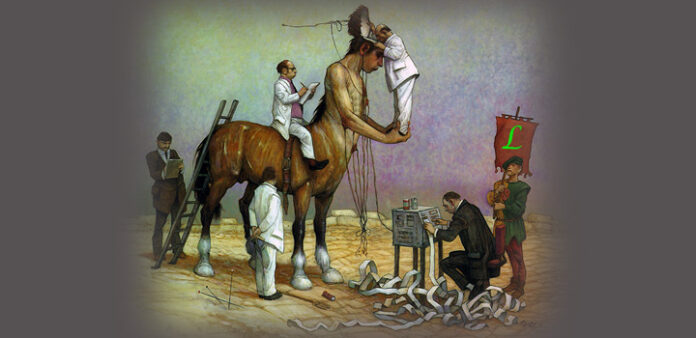When my daughter was born with congenital heart disease the doctors told me that a genetic anomaly was the likely cause. I wondered how and why our genetic information could get screwed up to produce a human heart with four different defects that would likely have killed her if she had been born a decade earlier.
Today, we have tools to cut out faulty genes and replace them with healthy ones. We can 3D-print human tissue. Does this mean we will soon be able to direct cells to build almost any human organ or part to then integrate into our bodies? What’s holding us back from a Frankensteinian future?
We may face two different outcomes:
- The downside is that we are on a path to creating chimeras or Frankenstein monsters.
- The upside is a path to medical breakthroughs that correct congenital defects, reverse Down’s Syndrome, regrow traumatized and severed body parts, reverse the course of degenerative diseases and more.
Imagine the Possibilities
It is no longer just imagination. The neuroscience researchers at the University of Wisconsin-Madison are 3D printing functional human brain tissue describing their work as opening a new window into tackling neurological and psychiatric disorders and creating re-engineering treatments for Alzheimer’s and Parkinson’s. What’s not to like?
Sy-Chun Zhang is a professor of neuroscience at Wisconsin’s Waisman Center. He describes what 3D-printing human brain tissue could lead to: “This could be a hugely powerful model to help us understand how brain cells and parts of the brain communicate in humans. It could change the way we look at stem cell biology, neuroscience and the pathogenesis of many neurological and psychiatric disorders.”
Zhang and his associates have used a bio-ink containing human pluripotent stem cells to print stacking layers of brain tissue allowing “the neurons to grow into each other and start talking.” The printed brain tissue includes the cerebral cortex and the striatum. The cells from different brain parts when printed start communicating with each other.
Regrowing Tissues Using Bioelectricity
Work being done on tissue regeneration at Tufts University is leading us to the potential to regrow severed or damaged limbs. Michael Levin is a biologist and professor at the university studying cell tissue regeneration and bioelectricity. He runs the Levin Lab with research that goes well beyond uncovering the cellular and genetic mechanisms responsible for tissue growth.
Levin is integrating biological electrical signalling into experiments when working with stem cells to regenerate complex tissues. He sees bioelectricity as the next big step in human tissue regeneration. It’s not quite Frankenstein, but it sounds a lot like it.
Levin theorizes that genome editing technology has limitations. He states by understanding the bioelectricity that binds cellular networks we will start untangling the software code of life.
When the Wisconsin researchers printed the brain cell tissue, the neurons and other cells started communicating using electrical signals. They didn’t understand how this happened, nor did they understand the shared messages being sent by the brain cells.
Levin wants to do a deep dive into the nature of bioelectric messaging in living things. He is co-editor of the journal Bioelectricity, where leading-edge research in this field is being published. He believes that we limit our scientific understanding of how biology works by studying only the genome and DNA. By manipulating bioelectric signals, he believes, it will give our bodies the equivalent of what we do when we adjust the thermostat in our homes to change a room temperature. Today in biology to make that type of adjustment we do the equivalent of rewiring the entire house.
Levin along with serial entrepreneur, Jess Mah, have founded Astonishing Labs, a company that plans to do more research in this area to understand bioelectric messages and the role they play in the body. Can they help to regrow worn and broken parts and extend our body’s healthy lifespan?
















